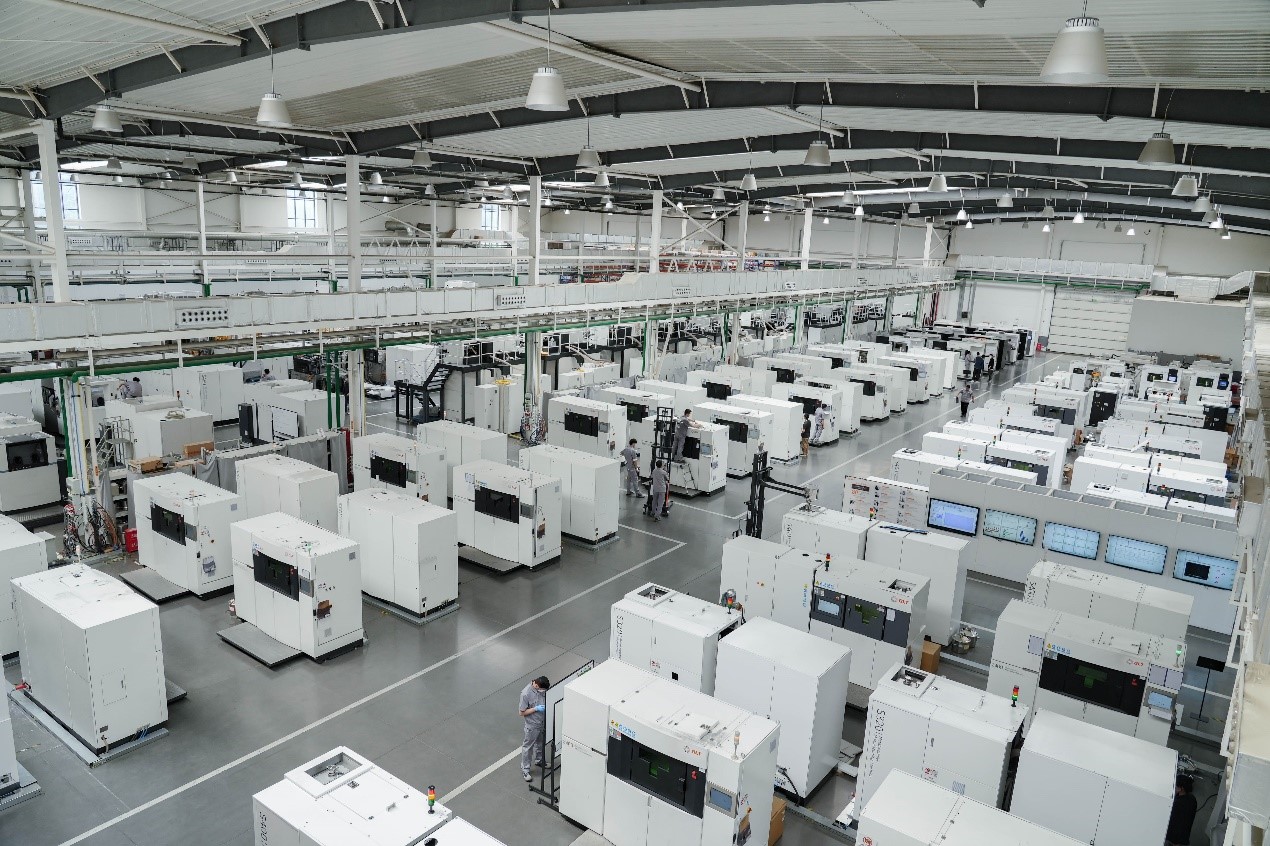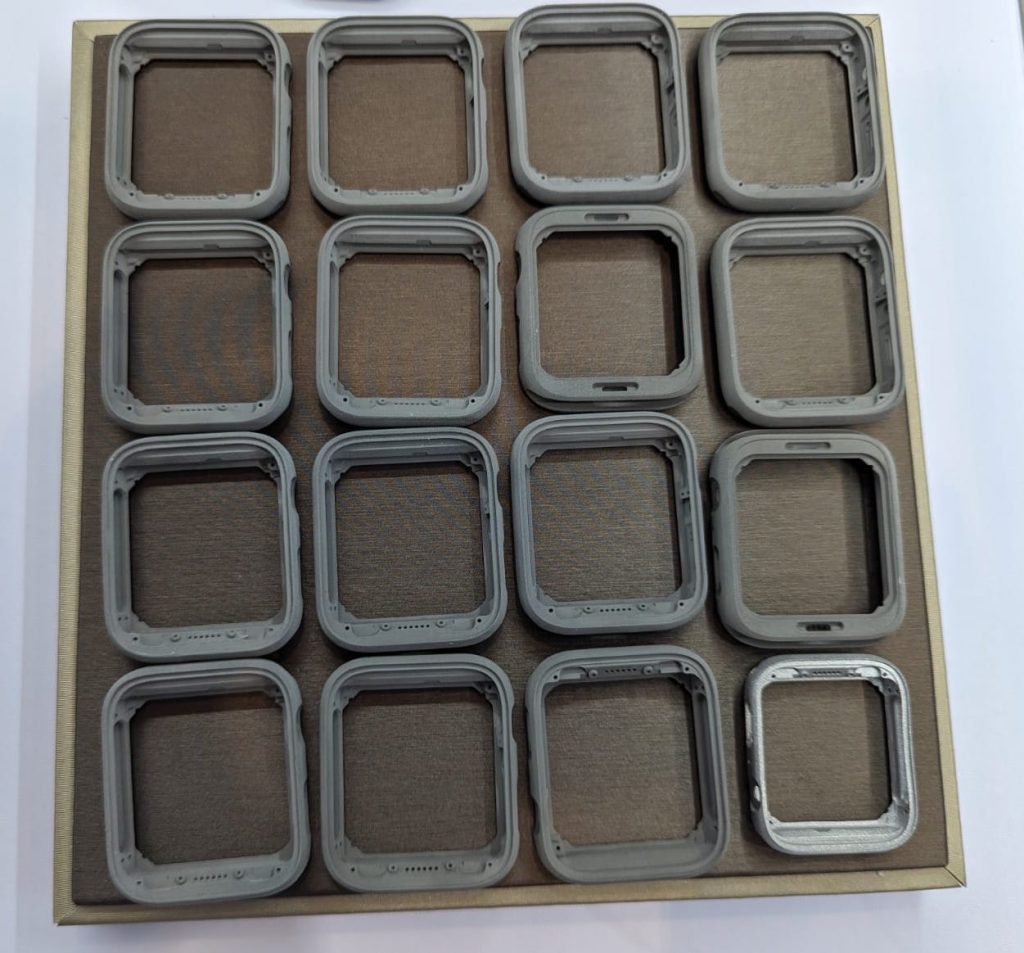New smartwatches from global consumer electronics company Apple Inc. will include metal 3D printed components, a report from TF International Securities analyst Ming-Chi Kuo indicates.
The US-based technology giant will reportedly include parts 3D printed by Chinese 3D printer manufacturer Bright Laser Technologies (BLT) in its Apple Watch Series 10.
Kuo’s predictions, recently published in a blog post, follow news last year that Apple was testing binder jet 3D printers from BLT to produce its Apple Watch Series 9. The new report indicates that BLT has now joined Apple’s component supply chain, directly producing end-use parts for the company.
According to Kuo, 3D printed parts will save significant production costs. Shipments of 3D printed parts are expected to grow in the coming years to support future Apple products.
Kuo also stated that the new Apple Watch will feature a larger screen (45mm and 49mm) and a thinner design than its predecessors. The upcoming Apple Watch Ultra 3 specifications are expected to remain “roughly the same,” though new color options are touted if production yields meet expectations.
Apple’s growing adoption of 3D printing could mark a significant milestone for additive manufacturing, potentially accelerating its use for mass production of consumer electronics.

Apple adopts additive manufacturing
This is not the first time Apple has leveraged additive manufacturing technology. BLT and fellow Chinese firm Farsoon previously supplied metal 3D printers to Apple, according to Kuo. Industrial laser systems specialist IPG Photonics was touted as supplying the 3D printer laser components.
In July 2023, Kuo suggested that the tech giant had adopted the 3D printers to support the production of the Apple Watch Ultra 2 launched that September. He explained that the 3D printed “mechanical parts” still required CNC post-processing, but improved production times and reduced costs.
An August 2023 article from Bloomberg backed up these claims, highlighting that the company was, at that time, using metal binder jetting to 3D print stainless steel Apple Watch cases.
These components are usually produced by forging bricks of material into smaller metal blocks which are then milled to the correct size and design. According to Bloomberg, anonymous Apple insiders revealed that the company is 3D printing the watch chassis to reduce material usage.
The report claimed that Apple has been developing its metal additive manufacturing technology since 2020, and tested the process with the Apple Watch Series 9’s steel cases. It is unclear whether the 3D printed components were featured in the Apple Watches shipped to customers.
Kuo’s most recent report claims that Apple failed to achieve 3D printing mass production last year, but has now “significantly improved” production efficiency. He believes that additive manufacturing could be adopted in future production of Apple Watch chassis, arguing these parts are easier to fabricate than other Apple products.
Away from Apple, Wuhan-based Binder jetting firm EasyMFG also 3D printed smartwatch cases. At Formnext South China 2023, the company displayed 316 stainless steel 3D printed smartwatch chassis produced for an undisclosed customer.
The company’s metal binder jetting process requires 3D printing, debinding and sintering in a furnace. The 3D printed parts undergo 18-20% shrinkage after they have been sintered, according to EasyMFG.

3D printing consumer products
The use of additive manufacturing for end-use consumer goods is growing, with manufacturers targeting high-volume production runs of 3D printed products. This sentiment was shared by 3D printing experts in the 2024 3D Printing Industry Surveys on key 3D printing trends and the future of 3D printing.
London-based technology startup Kibu recently launched recyclable 3D printed headphones for children.
Designed to challenge the notion of disposable consumer electronics, the ‘Kibu Headphones’ are designed to be assembled, repaired, and recycled by children themselves. Kibu’s new headphones are 3D printed by Batch.Works in Hackney, London, using recycled PLA derived from agricultural packaging waste.
Similarly, audio specialist Sennheiser introduced its own 3D printed headphones in 2022. The housing of the IE600 headphones is said to have been 3D printed from AMLOY-ZR01 powder. This reportedly allowed the company to achieve tight tolerances in production.
Away from consumer electronics, the sporting goods industry has also witnessed increasing adoption of additive manufacturing. Golf Club manufacturer Cobra Golf recently launched the world’s first commercially available 3D printed steel irons.
Called LIMIT3D, the 3D printed golf clubs are made from 316L stainless steel, and feature an internal lattice designed with nTop software. 3D printed using direct metal laser sintering (DMLS) technology, the club head reportedly combines the look and feel of a professional player’s club with a game improvement club’s forgiveness and playability benefits.
Register now for AMAA 2024 to hear insights from industry experts on additive manufacturing in aerospace, space, and defense.
Want to help select the winners of the 2024 3D Printing Industry Awards? Join the Expert Committee today.
What does the future of 3D printing hold?
What near-term 3D printing trends have been highlighted by industry experts?
Subscribe to the 3D Printing Industry newsletter to keep up to date with the latest 3D printing news.
You can also follow us on Twitter, like our Facebook page, and subscribe to the 3D Printing Industry Youtube channel to access more exclusive content.
Featured image shows Apple Watches. Image via Apple.


